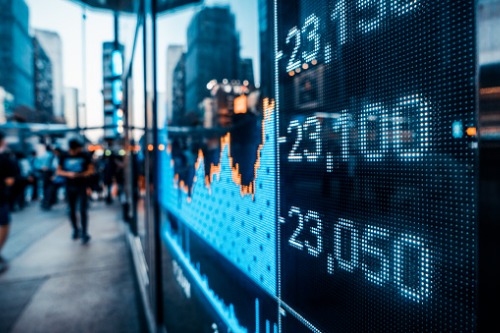Economic signs and financial indicators suggest that a low-vol ETF is not as safe as investors assume

With the current situation of broad market and economic uncertainty, demand for ETFs that pursue low-volatility strategies isn’t surprising. But not all low-volatility ETFs are built equal, and some may end up becoming less safe as a result.
In a recent piece, Barron’s contributor Stephen Gandel wrote that the US-listed iShares Edge MSCI Min Vol U.S.A. ETF (ticker: USMV) has attracted nearly US$9.5 billion. Over the first eight months of 2019, the iShares ETF grew by 42% to become the largest low-volatility ETF at US$32 billion, with the US$12-billion Invesco S&P 500 Low Volatility (SPLV) as a distant second.
“[T]he iShares ETF’s returns have been remarkable—up 22% in 2019, versus 18% for the S&P 500,” Gandel said. That squares with studies suggesting that low-volatility funds can offer better returns and lower risk than traditional index funds.
And in a rising stock market, new investors tend to chase stocks that are going up, while index funds — which are typically cap-weighted —also own more of the top-performing stocks as they rise. The upshot, Gandel said, is that low-volatility stocks are often relatively undervalued.
But now, he said, the average stock in the iShares ETF trades for 24 times trailing 12-monhth earnings, as compared to 19 for the S&P 500; against its MSCI benchmark, the ETF overall trades at a 17% premium. Citing a recent study from Leuthold Group, he said that low-volatility stocks, compared to their higher-volatility peers, are 99% more expensive than they have been over the period going back to 1990.
“Low volatility stocks tend to be in sectors that do better when interest rates are falling,” Gandel continued, attributing the favourable record observed among low-volatility ETFs in 2019 to the surprise reduction in interest rates this year. With so little room left for interest rates to slide, he said, low-volatility strategies may soon see a chill in enthusiasm.
Finally, he noted the fact that the iShares ETF is diversified. It owns the lowest-volatility stocks across a range of sectors; in contrast, the Invesco ETF owns the stocks with the lowest volatility, which means it tends to sway toward utilities and real estate.
According to work done by Research Affiliates, adjusting a straight low-volatility portfolio blunts its effectiveness at mitigating market downturns. Apparently in line with that finding, during the 19% fall in the S&P 500 from its October 3 peak until its December 26 rebound in 2018, USMV fell 12%, while SPLV declined by just 9%.



